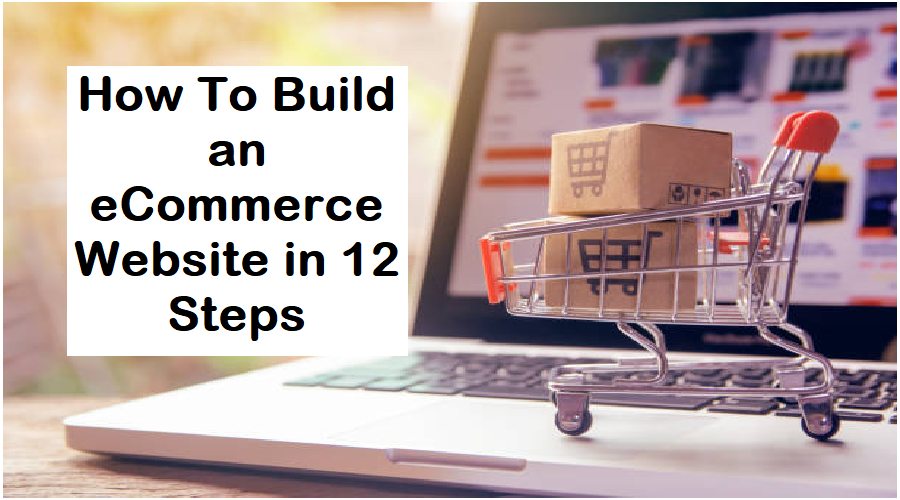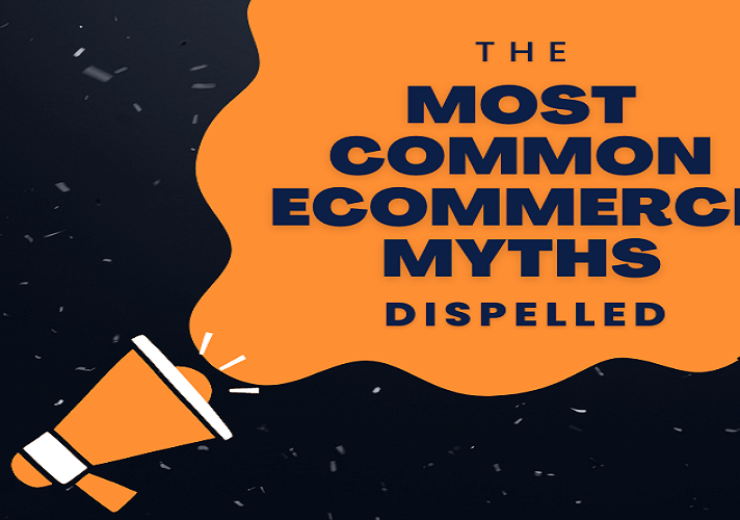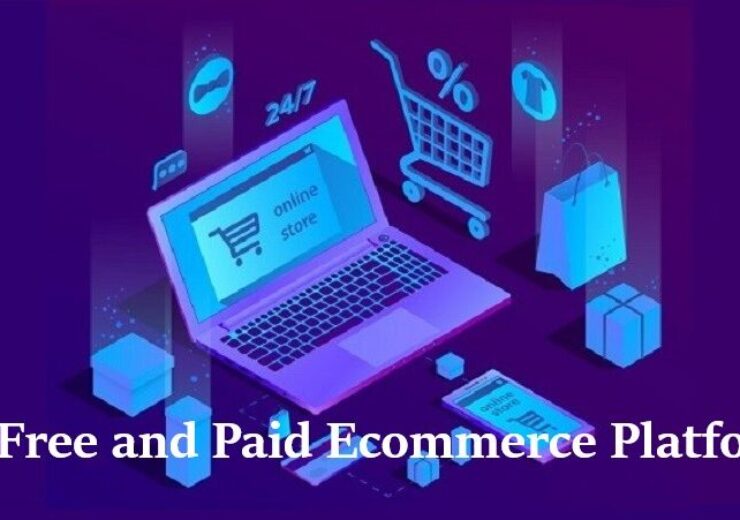How To Build an eCommerce Website in 12 Steps

E-commerce websites are no less important than traditional brick-and-mortar stores. Early ’90s retail stores had to be decent looking. Nowadays, an eCommerce store is essential for standing out from the competition, just like it was in the early 90s.
There are millions of online eCommerce stores you can shop from in today’s world, so you might think it will be hard for you to stand out, but if you don’t open your store, nobody will know you exist. Businesses have to adapt to changing times by upgrading their business modules as people adopt new shopping methods. eCommerce website development services can help you.
Building an eCommerce store may seem expensive and time-consuming, but it doesn’t have to be. The results of your investment are worth the cost of hiring eCommerce developers. You can still build your eCommerce store, but it will require time and energy to conduct research and go through trial and error.
Here we have talked about ten simple steps to develop an eCommerce store. Here’s a quick overview of what it takes to create an eCommerce website.
1. Determine the products that you are interested in selling (Research)
It is possible to sell many things online, but you must first figure out what you wish to trade. Products you are currently selling in your store or products you want to experiment with that you are already selling.
Conducting research is essential when choosing your products. Determine your main selling point, margin rates, and how you will outrank your competitors by choosing a product with high demand in the online marketplace.
An eCommerce store starts with selecting the right products based on in-depth research. The alternative is to find yourself caught between low margin rates and cutthroat competition.
2. Determine Your E-Commerce Business Model –
A business model for an eCommerce store is the same as for an offline business. Business to business (B2B) and business to consumer (B2C) are the two most common e-commerce business models.
B2C online stores deal with small yet frequent customers regularly, while B2B online stores handle bulk sales and large orders in one transaction. You can determine the structure of your website based on your eCommerce business model. ecommerce website development services can guide you.
3. Identify Your Target Audience –
You can better structure your eCommerce store by defining your target audience. It is very easy to figure out and leverage your competitors’ marketing strategies by analysing their website and online presence.
Knowing your target audience’s behaviour patterns, preferences, and choices, in addition to analysing competitors, will help you to design an effective marketing strategy. A little extra online research will help you discover new aspects of your target audience if you already own an offline store and know them well.
The design and visuals of your website should match the tastes and preferences of your target audience. This will help your business build a strong and trustworthy relationship with your target audience.
4. How To Decide And Purchase A Domain Name –
Are you nostalgic for the days when your business name was emblazoned on a large board outside the store? Isn’t it great to feel as if your business belongs to you? A domain name is just as important as that huge board for an eCommerce store.
You want your potential customers to recognize you quickly online, so choose a domain name that is similar to your business name. Purchase your domain before you start creating your eCommerce website because it is likely that many others will be searching for the same field, and you may lose it if you do not purchase it soon enough.
5. Choosing Your Branding Elements –
Make sure you add something unique to your online store that makes your business and company stand out. With an eye-catching logo, colour palette, design packaging, and storytelling power with unique content, you can ensure that your customers have a seamless experience.
People will begin to trust you when they hear about your business story. In the absence of your story, you are just another online seller. Personalise your website and brand and ecommerce website development services can guide you.
6. How To Pick The Right E-Commerce Platform –
After halfway through, you should now look for an eCommerce platform. Build your eCommerce store on Magento, Shopify, and WooCommerce. They offer flexibility and unique features.
If you decide to build your own website with an ecommerce platform, it should include the following key features:
Responsive design: It is important that the ecommerce platform offers a consistent experience across desktop, mobile app, and other mobile devices.
Product management: Adding new products, editing them, and maintaining the inventory should all be easy to accomplish. Additionally, you should be able to offer promotional or sale pricing for each product.
Content management system (CMS): In a design, recurring blocks of content are a special kind of content that needs a CMS to be updated and edited. Maintaining your website with new content can be accomplished with the help of a content management system.
Shopping cart: A shopping cart should be able to be customized and styled to blend seamlessly into the shopping experience.
Checkout page: The checkout page shouldn’t be fixed and can’t be customized, just like the shopping cart.
Payment processing: Payments can be accepted via credit cards as well as electronic payments such as PayPal, Stripe, Apple Pay, and Google Pay.
7. Having A Content Strategy
When developing an eCommerce website, you also need compelling content that interests your target audience and pursues them to purchase your product. Also, great content will support your site to rank better with the help of SEO.
Developing a content strategy should be done at the beginning of the process. Essentially, you need to know what content your brand needs to tell its story and illustrate what your products do. The types of media you’ll need to best serve your customers may include writing, photos, videos, infographics, and other forms of media.
Knowing your audience is crucial to content strategy. Could you please let me know what they ask most frequently about the products you carry? It’s important to include answers to basic questions that they might have, as well as information that your competitors may not provide. A content strategy determines what content is required on an ecommerce site and how it should be presented.
The content strategy of your website influences its information architecture. You can imagine content as freight on a train, and information architecture as the railroad tracks. To reach your customers, you must know what they need.
8. Optimize Your Site for Search Engines
Search engine optimization (SEO) is key to the success of your eCommerce website. An eCommerce website’s success depends on search engine optimization (SEO).
SEO helps your eCommerce website in many ways. Here are two basic SEO practises –
# identify search terms that people use to find the products and services you offer;
# Ensure the website contains relevant words and phrases in its headers and descriptions.
9. Category Relevance
You need easy-to-navigate categories on your eCommerce store as well. Categories provide your audience with a clear understanding of what you have to offer. If you don’t categorise your store, you’ll look messy, and customers will leave even before they’ve explored enough. A well-structured product page increases your store’s value.
10. Take detailed product photos
Most people with a decent camera and some experience can take good pictures with a tripod, a few lights, and a background of paper. For better-quality images, you might consider hiring a professional if you have the budget. In addition to making sure the photos are focused correctly, white balanced, and represent the products accurately, the person taking the photos is also accountable for making sure the colors accurately reflect the products. By having the ability to edit the photos further, you will be able to showcase your products to their fullest potential.
Customers cannot physically see and feel the product when shopping online, which is one of the disadvantages of online shopping. This needs to be addressed with the product photos you use. Your customers will be able to better understand your products if you use images that show your products from multiple angles and closeups.
11. Write a product description that is effective
Your product description tells a customer everything they need to know. Your product description outlines how an item works and the benefits of using it. Adding it to their cart is made easier because it provides all of the guidance they need.
Specifications and features are necessary in product descriptions, but they should not be a dry recitation of details. Empathy should be their guide and they must establish personal connections with potential customers.
Customers should be kept in mind when writing product descriptions, and the descriptions should emphasize how a product will solve their problems and improve their lives.
12. How To Choose The Best Shipping Software –
You must deliver the products ordered by your customers in addition to their orders. Your eCommerce website will be more successful if you add the right shipping software. ecommerce website development services can guide you.




